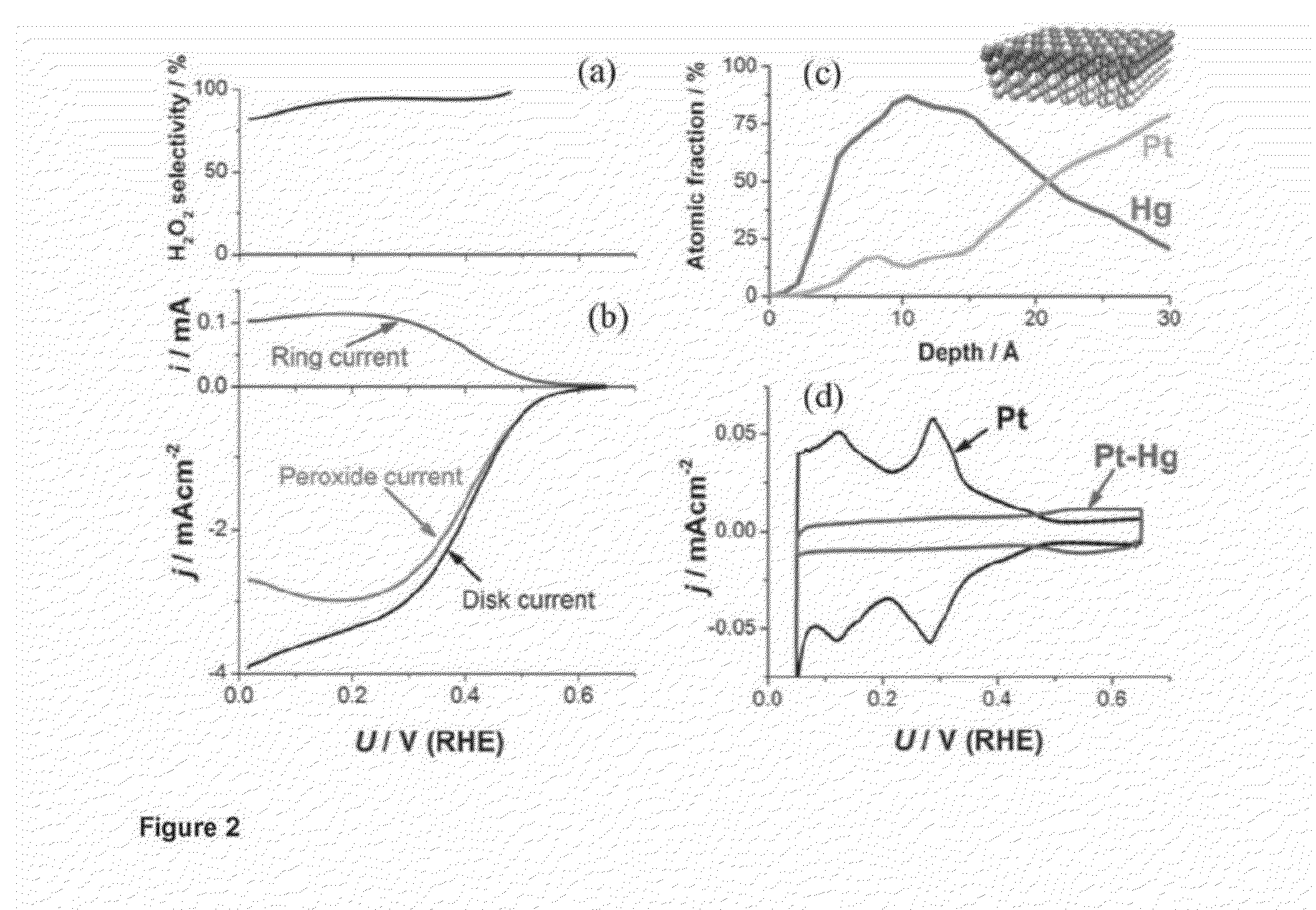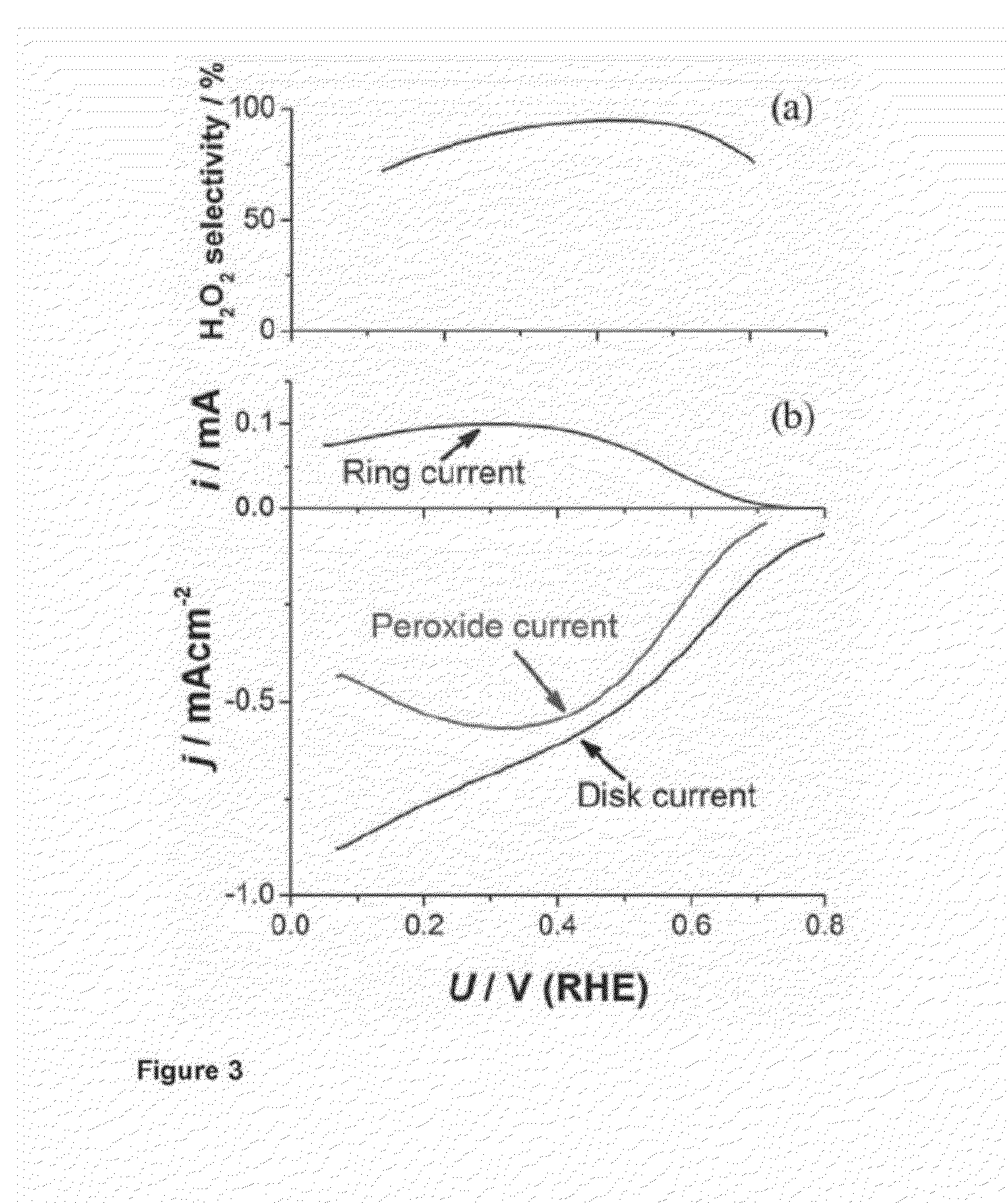Alloy Catalyst Material
a catalyst material and alloy technology, applied in the field of alloy catalyst materials, can solve the problems of not being able to use a commercial hydrogen peroxide synthesis process, not being able to meet the requirements of the whole process, not having a commercial process, etc., and achieves the effect of improving selectivity and activity, cheap and easy preparation
- Summary
- Abstract
- Description
- Claims
- Application Information
AI Technical Summary
Benefits of technology
Problems solved by technology
Method used
Image
Examples
example 1
Computational Screening
[0076]Computational Details
[0077]The computational analysis carried out using GPAW, a DFT code based on projected augmented wave (all electron frozen core approximation) method integrated with Atomic Simulation Environment (ASE). The revised Perdew-Burke-Ernzerhof (RPBE) was used as exchange correlation functional. The (111) facet of surface alloys and bulk alloys with face-centered cubic (fcc) crystal structure, i.e. Ag3Pt, Ag3Pd and Au3Pd were modelled using four-layer 2×2 and (√{square root over (3)}×√{square root over (3)})R30° periodically repeated slabs respectively, separated by at least 16Å vacuum between successive slabs. The lattice constants of the surface alloys were assumed to be as the same as that of host metals. An eight-layer 1×1 slab with 17.5Å vacuum between successive slabs was used to model PtHg4 (110) surface. Monkhorest-pack grids with dimensions 6×6×1, 6×6×1 and 4×4×1 were used to sample Brillouin zones of surface 2×2, (√{square root ov...
example 2
Experimental Testing the PtHg4 Alloy Catalyst Material
[0078]Extended Surface Electrode Preparation
[0079]A platinum polycrystalline electrode was mirror polished to >0.25 μm prior to every experiment and prepared as reported in Verdaguer-Casadevall et al, Journal of Power Sources 2012 Volume 220, Pages 205-210. In short, the electrode was flame annealed at ca. 800 C for 2 min and let cool down under a stream of Argon for 5 min. It was then covered with a droplet of hydrogenated water and embedded into the rotating ring-disk electrode (RRDE) setup. Several voltammograms in nitrogen saturated 0.1 M HClO4 were recorded to ensure a reproducible surface, and then the electrode was moved to an electrodeposition cell containing 0.1 M HClO4+1 mM HgClO4. The potential was swept from open circuit (ca. 1 V) at 50 mVs−1 to 0.2 V, where the potential was stopped for 2 minutes to electrodeposit mercury following the procedure detailed by Wu et al, Electrochimica Acta, 2008 Volume 10 pages 5961-596...
PUM
| Property | Measurement | Unit |
|---|---|---|
| Electric potential / voltage | aaaaa | aaaaa |
| Electric potential / voltage | aaaaa | aaaaa |
| Electric potential / voltage | aaaaa | aaaaa |
Abstract
Description
Claims
Application Information
 Login to View More
Login to View More - R&D
- Intellectual Property
- Life Sciences
- Materials
- Tech Scout
- Unparalleled Data Quality
- Higher Quality Content
- 60% Fewer Hallucinations
Browse by: Latest US Patents, China's latest patents, Technical Efficacy Thesaurus, Application Domain, Technology Topic, Popular Technical Reports.
© 2025 PatSnap. All rights reserved.Legal|Privacy policy|Modern Slavery Act Transparency Statement|Sitemap|About US| Contact US: help@patsnap.com



